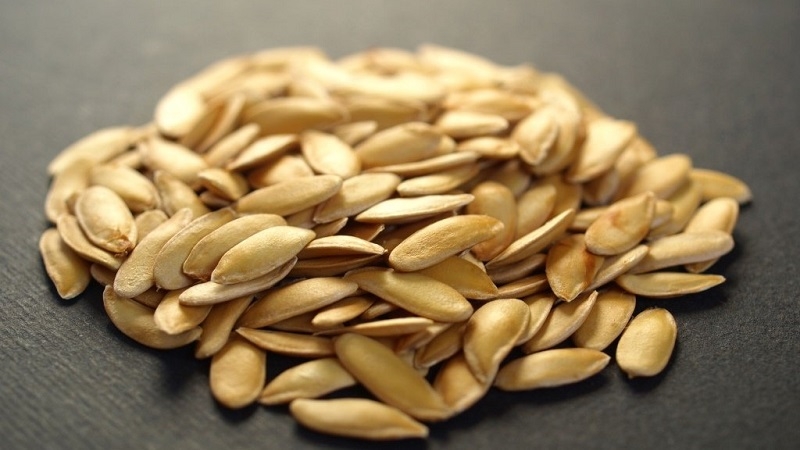How to grow a cucumber for seeds and correctly collect the seed: step by step instructions
Every summer resident has grown at least once cucumbers, and for sure everyone has a favorite variety. You can save it by preparing seeds with your own hands. How to prepare seed material at home, from what fruit to collect and in what time frame to do it - we will tell you about everything in the article.
The content of the article
What varieties are suitable
Any varieties with the qualities you like are suitable for collecting seed: taste, yield or appearance. The main thing is that it should really be a variety, that is, the distinctive features must be genetically fixed.
Cucumber is a cross-pollinated plant. Fertilization and seed formation are possible only when pollen from other plants of the same species gets in. To maintain purity, different varieties of cucumbers must be placed at a distance of at least 600 m from each other. If isolation measures are not followed, the seeds may carry the qualities of a completely different plant from which they were collected.
Can hybrids be used
Due to heterosis (the vitality of the hybrid), hybrid plants are distinguished by higher yields and better fruit qualities than conventional varieties. However, collecting seed from hybrids is not recommended.
Hybrids are a generation resulting from controlled crossing of selected parent plants. The crossing is repeated each time anew. Hybrids are not propagated because their offspring will be heterogeneous, splitting according to many characteristics will occur, and it will not be possible to get any predictable yield.
Important! The bags with the seeds of the hybrids are marked with the designations or F1 means that this is a first-order hybrid, that is, the seeds obtained from crossing plants of different varieties. If you collect seeds from it and sow them, then next year hybrids of the second order, or F2.

How to grow cucumbers for seeds
It is not difficult to grow cucumbers for further reproduction. You should choose 2-3 of the strongest and most productive bushes and leave 2-3 even and beautiful cucumbers on each until fully ripe. It is better to do this towards the end of the season, so as not to interfere with the new cucumbers tied.
Selected fruits are marked (you can tie a ribbon on the tail) and put planks under them to protect them from decay.
IN this article read about why gray mold appears on cucumbers.
When to collect
Cucumbers are harvested unripe for food, and only fully ripe vegetables are needed to harvest seeds. It is better to harvest the fruits after the first cold weather. The temperature drop has a beneficial effect on the embryos, and next year they will germinate together and give a good harvest.
What fruits to choose
You can understand that a cucumber has reached the required maturity and turned into a testis by several signs.
Varieties with black pubescence become brown in color, the skin is covered with a coarse mesh. Smooth fruits or with white pubescence turn yellow with varying degrees of mesh. The vegetable softens, the tail dries out.
There is an opinion that only tetrahedral fruits should be chosen to collect seeds and triangular fruits should be discarded. However, there is no evidence of the dependence of the yield on the number of edges.

How to collect at home
Harvesting seeds from your own fruits consists of several stages:
- The fruits are plucked from the lash and left to ripen for 7-10 days, until they become completely soft.
- After the fruit is cut lengthwise into two equal parts, the seeds are cleaned with a spoon along with mucus into a glass container and poured with water on 2/3 of the container.
- The resulting mass is fermented in a warm place for 2-4 days. The resulting gases tear off the mucous membrane, which will interfere with germination. The seeds should not be kept in water for longer, or they will begin to hatch.
- When fermentation is complete, add water to the top of the container and mix. Good seeds will remain at the bottom, and empty, non-germinating seeds will float in.
- Water with floating debris and mucus residues is drained, the remaining seeds are washed several times in running water.
- Spread the seed in a thin layer on a saucer or plate to dry. Leave in a dry warm place. It is better not to use paper, as the seeds can dry on it. For uniform drying, the grains are periodically agitated. Do not heat seeds to speed up the process.

Seed storage
The dried material is placed in a paper bag, envelope, or tissue bag. The main thing is that the material allows air to pass through. Do not add too many seeds, there should be free space in the container. The variety and year of collection are signed on the packages. Store seed in a cool, dry place.
Cucumber seeds remain viable for up to six years. The best harvest is obtained after two to three years of storage.
Read also:
how prepare chinese cucumbers for winter.
Benefit, harm and calorie content of cucumber pickle.
What to do, if the seedlings of cucumbers turned yellow.

Conclusion
It is not difficult to collect the seeds of cucumbers of the variety you like, but several nuances must be observed. Only varieties, not hybrids, are taken for seed. The latter will not produce offspring with the expected traits.
For harvesting seeds, fruits of biological maturity are used: large, soft, brown or yellow in color, with a pronounced mesh on the peel. The seeds are scraped together with the mucus and allowed to ferment to separate from the shell. Then they are washed and dried. Store in a cool dry place for up to six years. If everything is done correctly, plants from their own seeds will delight with a harvest of juicy cucumbers.